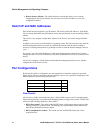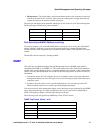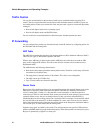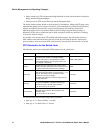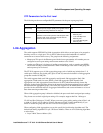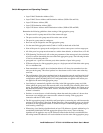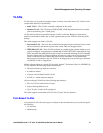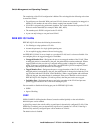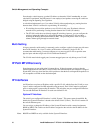Intel® NetStructure™ ZT 8101 10/100 Ethernet Switch User’s Manual 31
Switch Management and Operating Concepts
The table can contain 32 entries, and two table entries are needed to configure a bi-directional
filter.
Port Mirroring
Port mirroring allows the traffic on a particular port to be monitored by sending copies of the
packets to a target port. You can then attach a logic analyzer or a RMON probe to the target port
and study the traffic crossing the source port in a completely unobtrusive manner. You can
configure only one port to be a target port, but you can select multiple ports to be mirrored to this
target port. For optimum performance, you should mirror three or fewer ports at any given time.
You can select which traffic is mirrored. For a given mirrored port (or source port), you can select
to mirror only incoming traffic, only outgoing traffic, or both.
When mirroring ports, remember the following:
• The source port cannot be the target port.
• The target port cannot belong to a link aggregation group.
• The target port should be operating at the same or higher speed than the source port. If the
target port is operating at a lower speed than the source port, packets will be lost.
Spanning Tree Protocol
The IEEE 802.1D Spanning Tree Protocol allows for the blocking of links between switches that
form loops within the network. When multiple links between switches are detected, a primary link
is established. Duplicated links are blocked from use and become standby links. The protocol
allows for the duplicate links to be used in the event of a failure of the primary link.
It is possible to cause serious degradation of network performance if the Spanning Tree is
incorrectly configured. The switch’s default global setting should be used by the majority of
installations.
The ZT 8101 switch performs the following functions:
• Creates a single spanning tree from any combination of switching or bridging elements.
• Creates multiple spanning trees from any combination of ports contained within a single
switch, in user-specified groups.
• Automatically reconfigures the spanning tree to compensate for the failure, addition, or
removal of any element in the tree.
• Reconfigures the spanning tree without operator intervention.
STP Levels and Parameters
The ZT 8101 switch allows for two levels of operation: the switch level and the port level. The
switch level forms a spanning tree consisting of links between one or more switches. The port level
constructs a spanning tree consisting of groups of one or more ports. The STP operates in much the
same way for both levels.




